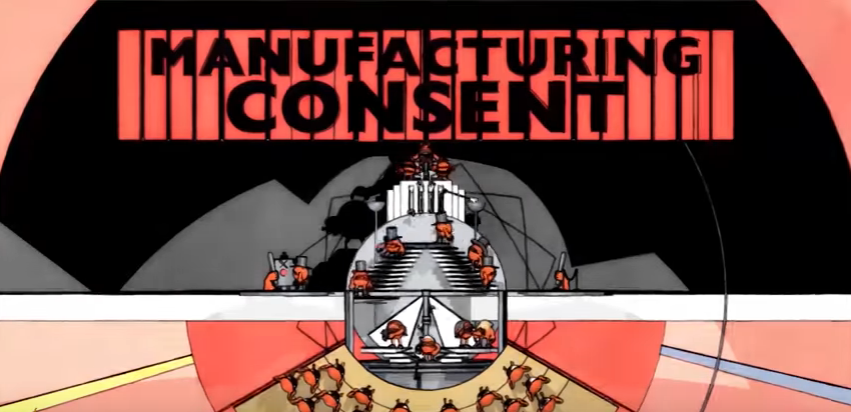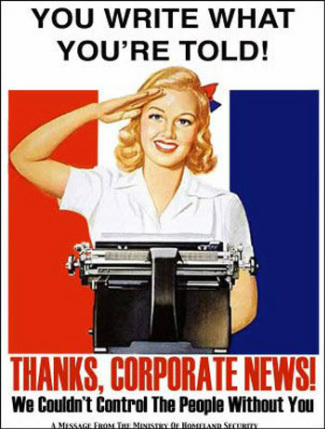first lets start of with what Manufacturing Consent is – Manufacturing Consent is a concept from Noam Chomsky and Edward S. Herman’s book, describing how mass media serves powerful interests by shaping public opinion to align with elite agendas. The authors argue that media does this through a “Propaganda Model,” using filters like ownership, advertising reliance, sourcing from powerful entities, backlash management, and promoting dominant ideologies to control the narrative. As a result, mainstream media subtly influences the public to “consent” to policies that benefit the elite, often sidelining alternative perspectives.
an example of this topic – Manufacturing Consent can be seen in media coverage of consumer products, such as the promotion of fast fashion. Major media outlets, often supported by advertising from fashion brands, tend to focus on the affordability and trendiness of fast fashion rather than the environmental or ethical issues associated with it, such as poor labor practices or environmental damage. By highlighting only the positive aspects and rarely addressing the negatives, media subtly encourages public acceptance of fast fashion, shaping consumer behavior to align with the interests of the brands and the industry. This selective coverage helps “manufacture consent” around the idea that fast fashion is desirable and acceptable, keeping critical perspectives on sustainability and ethics out of mainstream conversation.
Manufacturing Consent is common in the media largely due to the influence of powerful interests that control, fund, or rely on media outlets. Media corporations are often part of larger business conglomerates or rely on advertising revenue, which ties them financially to specific industries, corporations, or government entities. This financial dependency creates incentives for media outlets to align their narratives with those of their sponsors and owners to avoid risking profit losses. Additionally, media organizations tend to source news from official or elite channels, reinforcing narratives from the most powerful voices while excluding marginalized perspectives.
This practice can be harmful because it undermines the media’s role as an independent check on power. Instead of offering diverse viewpoints or challenging prevailing narratives, media focused on manufacturing consent promotes a narrow perspective that serves elite interests, potentially misinforming the public. This leads to a less informed society where individuals may not have access to all sides of an issue, limiting critical thinking and debate. By excluding dissenting voices, manufacturing consent erodes democracy by stifling discussion and creating a passive public that is more easily guided by the interests of the powerful rather than by balanced, factual information.
People have real power to push back against Manufacturing Consent if we stay curious and question the information we’re fed by big companies and apps. By checking out different news sources, supporting independent voices, and asking ourselves why a story is being told a certain way, we can avoid falling for narratives that mostly benefit powerful interests. When we demand transparency—like fairer algorithms and honest advertising – companies may feel more pressure to do things differently. By sharing our views, learning to spot biases, and backing platforms that put truth over profits, we can help make sure that public opinion isn’t so easily shaped by those at the top. Small actions by everyday people can really make a difference in creating a more informed world.
‧₊˚✧Hope you enjoyed reading ✧˚₊‧






I liked that you were creative and used of colour accents in your blog post, as well as the web design features offered by WordPress. I like that you liked the book in an image instead of doing a hyperlink or an in text citation.
You clearly summarised the theory presented by Chomsky in your introduction paragraph, and went on to give a modern day example of fast fashion to showcase how this theory is present today. I definitely agree that fast fashion is something that the media is pushing onto the public so that companies have a financial gain. You reflect on what can be done to tackle algorithmic biases, and researching beyond what mainstream media is feeding us to be fully informed in our decision making.
Your blog post could have included a specific advertisement, campaign or brand as an example. For example, Zara or Bershka jumping into popular fashion trends (like everything having bows on it) instead of focusing on sustainability (as you mentioned).
Hi, This post provides a thoughtful and insightful explanation of Manufacturing Consent, effectively linking it to real-world examples like the promotion of fast fashion and the broader influence of powerful corporate interests in media. It highlights the crucial role of media in shaping public opinion and emphasizes how individuals can resist these manipulative forces by staying curious and supporting independent voices. The emphasis on transparency and critical thinking offers a practical roadmap for empowering audiences to challenge mainstream narratives and foster a more informed society.